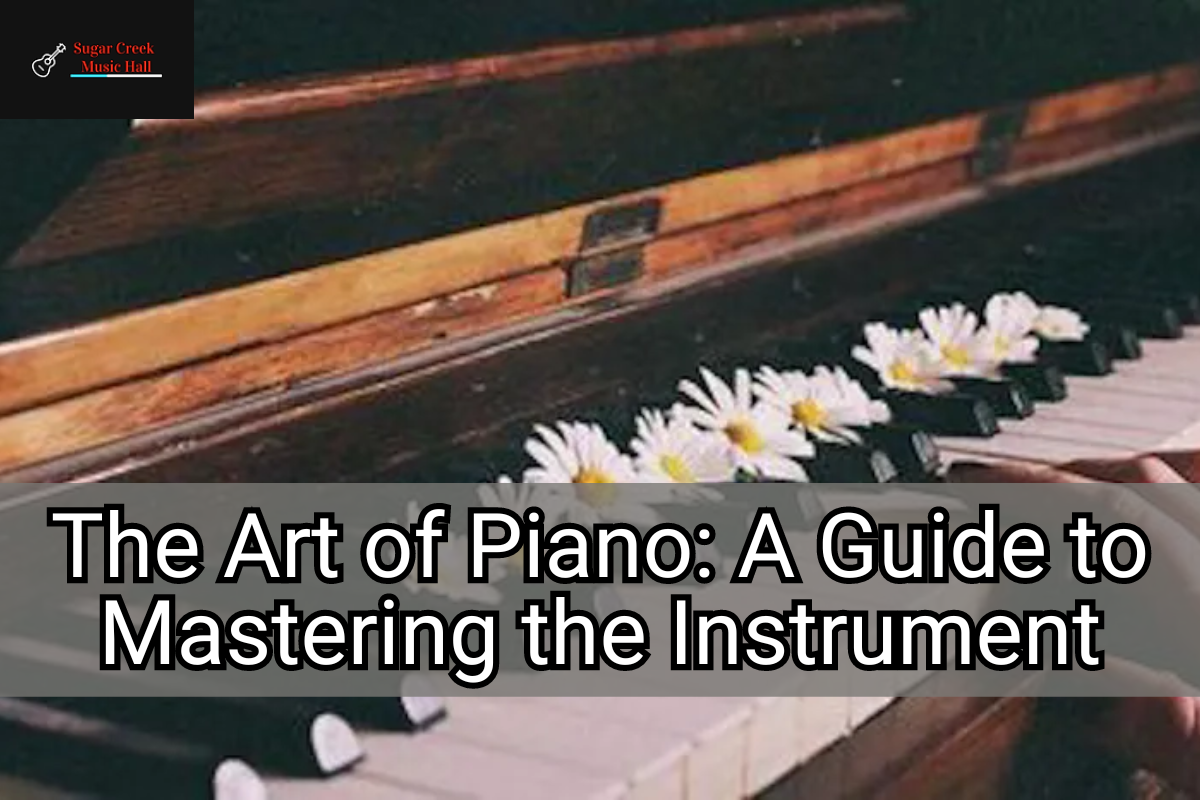The Art of Piano: A Guide to Mastering the Instrument: Learn about the history of the piano and connect with it, whether you’re a beginner or an expert. Discover its development into a household staple. Keep reading to see your piano in a new light next time!
Definition of piano in music?
A piano is a keyboard instrument. It makes sound by striking strings with keyboard-controlled hammers. The piano’s mechanical action makes it a percussion instrument.
The piano has been crucial to music since its invention. It appears in classical, pop, and rock music. The piano was also preferred by Mozart, Beethoven, and Chopin. The instrument is loved worldwide for its unique sound, which has inspired many musicians and audiences.
The piano wasn’t the first keyboard instrument. The hydraulis, organ, and harpsichord were the first keyboard instruments. These instruments made sound by plucking the strings instead of hammering them. Today’s piano evolved from the pianoforte, a new keyboard instrument invented in the 1700s. Mechanisms and sound production dominate the “harpsichord vs piano” debate.
Cristofori—first piano inventor
Italian harpsichord maker Bartolomeo Cristofori invented the first piano. The first pianoforte, played with hammers, was built by Cristofori in 1709. The new instrument’s dynamic range allowed soft and loud playing, unlike the harpsichord.
The Cristofori piano looked and sounded different from modern ones. Instead of plucked strings like the harpsichord, he decided to strike them with hammers to create more dynamics. This video is from the Royal Academy of Music piano museum. You can see inside an early piano and hear the differences in instruments as they developed.
Pre-piano keyboard instruments
Early keyboard instruments influenced the modern piano. This includes:
- Ancient Greeks tuned other instruments with the monochord, a one-string instrument.
- Mediaeval Europe used the polychord, a stringed instrument with multiple pitches.
- By the early 18th century, the harpsichord was Europe’s most popular keyboard instrument, but composers wanted more dynamic range and expression.
In the early 1700s, Italian harpsichord maker Bartolomeo Cristofori invented the piano. It was called the “gravicembalo col piano e forte,” or “harpsichord with soft and loud.” Cristofori’s revolutionary design used a hammer mechanism instead of plucking strings, giving him more control over dynamics and sustain.
Piano evolution
Cristofori’s invention was a major step in piano development, but it took decades to become popular. Early users were wealthy patrons and royalty who could afford the instrument’s high price. As the piano improved and became more affordable, it quickly replaced the harpsichord as the 18th- and 19th-century keyboard instrument of choice. This is likely the world’s smallest piano!
Discovering piano pedal magic
This period saw several technical advances that improved the piano’s sound and play ability. The sustain pedal, a third pedal, helped musicians make a more resonant sound. The mid-19th-century iron frame increased string tension and volume and clarity.
Cristofori invented the piano pedal, which became the standard sustain pedal on all pianos. Many famous composers and performers wrote and performed piano music in the 19th and early 20th centuries, increasing its popularity. The piano was used in classical, jazz, and rock and roll.
The piano remains a global favourite. It’s still used in many genres and styles, and its impact on music history is huge. The piano has evolved from a new keyboard instrument designed by an Italian harpsichord maker to a beloved and essential musical instrument in its nearly 300-year history.
The modern piano
Piano design, technology, production, and sound quality have evolved over time. Designers experimented with materials and mechanisms to improve piano sound during the Classical period. For instance, piano pedals let players sustain notes, making the instrument more expressive. The string-striking mechanism was also altered to improve responsiveness and touch sensitivity
The Romantic era saw piano makers focus on richer, more powerful sounds. The invention of cross-stringing allowed longer strings to be used in the instrument, making it sound more resonant. This time also saw the introduction of the iron frame, which supports strings and stabilises tension.
Emanuel Moors double keyboard piano: rare gem
Emanuel Moor Pianoforte is another version. Double keyboards are the main difference between this piano and classical ones. Hungarian composer and pianist Emánuel Moór (1863–1931) invented this intriguing instrument. It had two keyboards stacked. The upper one had 76 keys, while the lower one had 88. It was also unusual to play. The instrument’s mechanism played the lower keyboard key an octave higher when a key was pressed on the upper.
This mechanism allowed the pianist to play two octaves with one hand, which was impossible on a regular piano. It made playing complex double manual harpsichord pieces possible, since a keyboard piano would require difficult cross-hand movements. No Emánuel Moór Pianoforte was mass-produced. Only about 60 pianos have been made by Bösendorfer, Bechstein, Chickering, and Steinway & Sons.
The upright piano debuted in the late 19th century. Our new design made the instrument more compact and accessible to the public. A different action design on the upright piano made note repetition faster.
Technology and digital pianos advance.
- Digital pianos can produce more sounds and connect to digital devices than traditional pianos thanks to technology.
- Sustainable materials like bamboo and technology are used in piano design and production.
- The piano has endured despite these advances. Modern genres like pop and rock use it, as does classical music. New pianists and music lovers are inspired by the piano.
- With the internet, learning to play the piano is easier than ever. Skoove offers beginner and advanced lessons online.
- Interactive lessons on Skoove.com let you learn at your own pace at home. Skoove.com helps you learn piano and achieve your musical goals.
